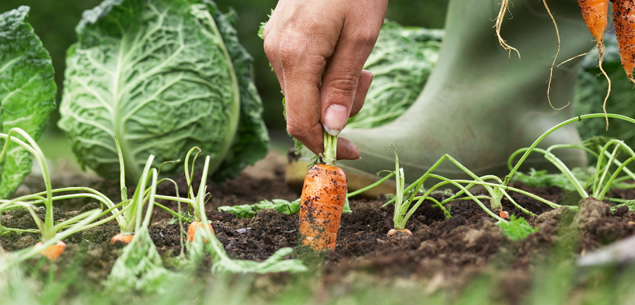There are certain food items – seasonings, oils and add-ons – that make just about anything palatable. Garlic, sesame oil, bacon, cream, toasted pine nuts, lurpak butter, panko breadcrumbs, parmesan – I could go on, but you probably have your own, very different list.
Someone I know has on his list baked beans, poached eggs and beer. Enough said. Whatever your preferences are, it’s essential to remember these ingredients and have them on hand at this time of year because you’re likely to be eating fresh vegetables from the garden that you don’t adore.
When I first started vegetable gardening, I swore I would never plant anything I didn’t love – which needless to say left me with a very small winter garden of spinach the first year. Now, I’ve realised that fresh, homegrown vegetables you don’t like are still better than sad, out-of-season, imported specimens that you do – and there’s another reason for eating them too.
The body has specific nutrient requirements at certain times of the year and vegetables that grow naturally at that time are likely to supply them. This brings me, reluctantly, to brussels sprouts – although not nearly as reluctantly as I when I approached them as a child. The sad fact is, they’re good for you. Our mothers said so and they were right. Even sadder, they’re especially good for you if you steam them, providing some special cholesterol-lowering benefits.
I won’t bore you with the details, which have to do with the fibre-related components binding with bile acids, but the Germans have studied this so how could you not believe it. Brussels sprouts may also have unique health benefits in the area of DNA protection. Another study showed improved stability of DNA inside white blood cells after the daily consumption of 1.25 cups of brussels sprouts.
If you have yet to be convinced of their value, you may be ready to give up on them about now, since even
the party faithful would have difficulty with 1.25 cups a day. Best to alternate with other cruciferous vegetables – the name for the shape of the flowers, whose petals resemble a cross, such as cauliflower, cabbage, cress, and broccoli.

At a minimum, the healthy food police suggestion includes 1.25 cups of cruciferous veges as part of your diet two or three times a week. Two cups five times a week will earn you even more brownie points. Now to the really important bit – how to make brussels sprouts taste like something else.
Try steaming them, then serve sprinkled with a sauteed mixture of garlic, olive oil and panko crumbs, and topped with a shake of parmesan and chopped parsley. Alternatively, fry chopped bacon, onion and pine nuts, then add pre-steamed spouts, mix together, and serve.
My current favourite way of jazzing up anything cruciferous is to steam, then saute very quickly, and serve squirted with sesame dressing. Last but not least, don’t overcook them or they’ll smell like sulphur and then nobody will want to eat them.
**VARIETIES
**There are quite a few varieties of brussels sprouts to choose from, and if you have kids, be well advised to go for the red ones and pretend they’re something different altogether.
Red Ribs is a novelty purple/red brussels sprout with a milder, nuttier fl avour than the standard greenies. It matures over a long period and a good, hard frost will enhance its colour. Be aware that the colour can be water-soluble so microwave or steam it in minimal water. Sow it in late summer and you’ll be eating it this time next year.
Falstaff Red can be sown in spring, summer or autumn. It likes a sheltered spot in well-drained soil with plenty of sun, and promises to keep its purple colour, even after cooking. It also has the mild, nutty fl avour that fools kids into thinking it’s not really a sprout.
Long Island improved really is improved. The formation of sprouts is stimulated by pulling off some of the leaves below each sprout so that growth is directed to the buds. It’s good for small gardens and you can even get a second crop if sprouts are cut neatly from the stem leaving as much of the spur as possible.
Jade is another green one that’s easy to grow. Its high-yielding, mediumsized plants produce up to 80 sprouts – more than enough for 1.25 cups two or three times a week.




